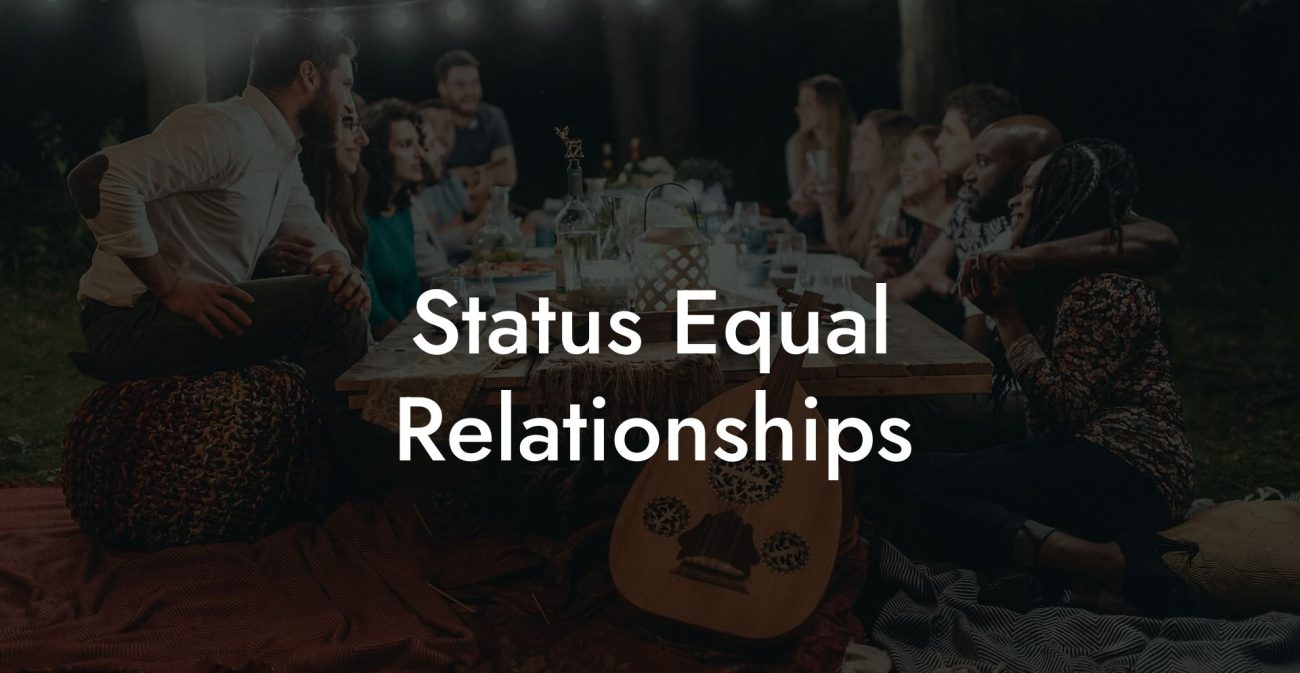Guide to Partner Swap 101

Welcome to Partner Swap 101, a comprehensive guide designed to introduce you to the fundamentals of partner swapping. Whether you’re completely new to the concept or have dabbled in it before and are looking for more structure and insight, this guide will help you understand what partner swapping is, how to approach it ethically and safely, and how to navigate the emotional, physical, and logistical aspects of the lifestyle. In today’s evolving landscape of consensual non-monogamy, partner swapping offers an opportunity for couples and individuals to explore sexual freedom and variety while maintaining clear boundaries and open communication.
Quick Links to Useful Sections
- Understanding Partner Swapping
- The Core Concepts of Partner Swapping
- Why Couples Choose to Swap Partners
- Key Benefits of Partner Swapping
- Challenges and Risks in Partner Swapping
- Setting Up Guidelines and Rules for Partner Swapping
- Practical Tips for First-Time Partner Swapping
- Real-Life Experiences and Anecdotes
- Expert Insights and Research Findings
- FAQ: Partner Swap 101
- Resources and Community Support
Understanding Partner Swapping
Partner swapping, sometimes known as “wife swapping,” “husband swapping,” or more neutrally as “partner exchange,” is a consensual practice where couples agree to engage in sexual or romantic encounters with other couples or individuals. Unlike infidelity, partner swapping is based on mutual consent and is practiced openly by all parties involved. It falls under the broader umbrella of ethical non-monogamy and is often embraced as a way for couples to enhance their sexual experiences, boost excitement in their relationship, and explore new dimensions of intimacy.
The practice can vary widely. For some couples, partner swapping is an occasional event, a way to inject novelty into their relationship. For others, it may become a regular part of their lifestyle. What remains constant is the emphasis on clear communication, respect for boundaries, and prioritization of the primary relationship. The goal is to ensure that the experience is enjoyable and enriching for everyone involved.
Partner swapping is not limited to a specific gender or sexual orientation, it is practiced by heterosexual, homosexual, and non-binary couples alike. Its increasing visibility in media and online communities has helped demystify the practice, making it more accessible to those who are curious about alternative sexual lifestyles.
The Core Concepts of Partner Swapping
To fully understand partner swapping, it is important to grasp several core concepts:
- Consensual Non-monogamy: At its heart, partner swapping is an expression of consensual non-monogamy where all parties agree to share sexual and/or romantic experiences with others.
- Transparency and Honesty: Open communication about desires, boundaries, and experiences is essential. This transparency ensures that no one is left in the dark, and that trust is maintained within the primary relationship.
- Defined Boundaries: Prior to any swapping, couples must negotiate clear boundaries. This includes what is acceptable behavior, how much detail is shared about encounters, and guidelines for future interactions.
- Mutual Respect: All interactions should be conducted with respect for everyone’s feelings and boundaries. The primary relationship must be safeguarded, ensuring that the experience enhances rather than detracts from the core partnership.
- Safety and Health: Prioritizing sexual health and safety is non-negotiable. This involves the use of protection, regular STI testing, and adherence to agreed-upon safety protocols.
Why Couples Choose to Swap Partners
Couples may be drawn to partner swapping for a variety of reasons:
- Sexual Exploration: Many couples find that swapping partners can bring new sexual experiences and help them explore fantasies in a safe and consensual environment.
- Renewed Excitement: The novelty of engaging with new partners can rekindle excitement and passion within the primary relationship, adding a spark that sometimes fades over time.
- Enhanced Communication: The process of negotiating and establishing rules for partner swapping often leads to improved communication and deeper emotional intimacy between partners.
- Personal Growth: Experiencing new dynamics can help individuals learn more about themselves, their desires, and their limits, contributing to overall personal development.
- Breaking Social Taboos: For some, partner swapping is a way to challenge traditional norms and embrace a lifestyle that values freedom, self-expression, and ethical non-monogamy.
Key Benefits of Partner Swapping
Engaging in partner swapping can offer significant benefits if approached with care and clear guidelines:
- Diverse Sexual Experiences: Partner swapping provides the opportunity to explore different sexual techniques, fantasies, and pleasures that can enhance personal satisfaction and spice up the primary relationship.
- Strengthened Primary Bond: By openly discussing and navigating the complexities of external relationships, couples often find that their primary bond becomes stronger and more resilient.
- Emotional Enrichment: Interacting with multiple partners can lead to diverse emotional experiences and support systems, contributing to a richer, more fulfilling life.
- Improved Communication Skills: The negotiation process for partner swapping requires effective, honest dialogue, which can lead to better overall communication within the primary relationship.
- Personal Empowerment: Experiencing new forms of intimacy and exploration can boost self-confidence and encourage individuals to take ownership of their sexual and emotional well-being.
Challenges and Risks in Partner Swapping
Despite its potential benefits, partner swapping also comes with challenges and risks that must be carefully managed:
- Emotional Vulnerability: The introduction of new partners can trigger feelings of jealousy, insecurity, or fear of abandonment in one or both partners. These emotions require ongoing management through honest conversation and, if needed, professional guidance.
- Logistical Difficulties: Coordinating schedules, ensuring that all parties are informed, and managing the practical aspects of swapping can be complex. Without proper organization, misunderstandings may arise.
- Social Stigma: Partner swapping is still viewed as taboo by many. Couples may face judgment or lack of support from family, friends, or society, which can add stress to the relationship.
- Health Risks: Engaging with multiple partners increases the importance of practicing safe sex and regular STI testing. Neglecting these precautions can lead to serious health consequences.
- Misaligned Expectations: If partners do not have a shared understanding of what partner swapping entails, expectations can diverge, leading to conflict and disappointment.
Recognizing these challenges is the first step in mitigating their impact. With the right preparation, clear communication, and adherence to established guidelines, many couples find that the rewards outweigh the risks.
Setting Up Guidelines and Rules for Partner Swapping
To successfully navigate partner swapping, it is essential to establish a clear set of guidelines and rules. Here are the key components to consider:
- Communication Rules: Agree on how and when you will discuss potential swaps, experiences, and feelings. Establish regular check-ins to ensure that both partners feel heard and secure.
- Consent Protocols: Define what constitutes consent for each new encounter. Ensure that every participant, including the primary couple and any external partners, gives clear, enthusiastic, and ongoing consent.
- Boundaries: Clearly outline what is acceptable in terms of physical activities, emotional involvement, and time commitments. Document these boundaries in a relationship agreement if needed, and review them regularly.
- Sexual Health Measures: Set strict rules regarding safe sex practices, including the use of protection and regular STI testing. Ensure that all parties understand and adhere to these protocols.
- Privacy and Transparency: Decide how much information will be shared about external encounters. Balancing transparency with personal privacy is key to maintaining trust without compromising comfort.
- Time Management: Use digital tools like shared calendars to coordinate dates and ensure that your primary relationship receives sufficient attention and care.
- Conflict Resolution: Develop strategies for addressing disagreements or emotional challenges that may arise. This could include scheduled “cool-down” periods, mediation, or professional counseling.
Practical Tips for First-Time Partner Swapping
If you and your partner are considering trying partner swapping for the first time, here are some practical tips to help you ease into the experience:
- Start Small: Consider beginning with low-pressure, casual encounters. This can help both partners adjust to the idea without feeling overwhelmed.
- Research and Choose Wisely: Take the time to research local events, clubs, or online platforms dedicated to partner swapping. Look for reputable communities with clear guidelines and positive reviews.
- Have a Trial Run: Some couples find it helpful to experiment with a “trial” swap before fully committing to regular partner swapping. Use this period to assess your comfort levels and make any necessary adjustments to your rules and expectations.
- Be Honest with Yourself: Regularly assess your emotional state. If you begin to feel overwhelmed or insecure, pause and discuss these feelings with your partner.
- Celebrate the Experience: Acknowledge and celebrate your successes and the moments of personal growth that come from trying something new. Positive reinforcement can help solidify the benefits of the experience.
Real-Life Experiences and Anecdotes
Personal stories provide a window into the realities of partner swapping. For example, consider the experience of a couple, Lisa and Mark, who decided to try partner swapping after feeling that their long-term relationship had lost some of its initial spark. They began with clear, open conversations and established strict guidelines regarding safe sex, emotional check-ins, and scheduling. Initially, they faced moments of jealousy and uncertainty, but with time, they discovered that the experience not only reinvigorated their relationship but also improved their communication and trust. Today, Lisa and Mark credit their successful partner swapping experiences with deepening their bond and expanding their understanding of intimacy.
In another instance, Alex, who was new to the lifestyle, found that his first partner swap was both exhilarating and enlightening. By preparing in advance, setting clear boundaries, and engaging in post-experience debriefs with his partner, Alex managed to navigate the experience without significant emotional distress. His journey illustrates that while the initial transition can be challenging, the long-term rewards in personal growth and enhanced connection can be well worth the effort.
Expert Insights and Research Findings
Relationship experts emphasize that partner swapping, when approached ethically and with clear communication, can be a positive addition to a couple’s relationship toolkit. Dr. Samantha Rivera, a therapist specializing in non-traditional relationships, notes, “Partner swapping is not a one-size-fits-all solution. It requires thorough communication, clear boundaries, and mutual respect. When these elements are in place, many couples find that the experience can enhance trust and add excitement to their relationship.”
Relationship coach Marcus Lee adds, “The key is to start slowly, educate yourselves, and ensure that both partners are comfortable with every step of the process. Using structured communication tools and regularly revisiting your boundaries can make partner swapping a rewarding experience rather than a source of conflict.”
Research on consensual non-monogamy shows that couples who successfully engage in partner swapping often report improved communication, heightened self-awareness, and increased overall relationship satisfaction. These findings underscore the potential for personal and relational growth when the practice is managed with ethical rigor.
FAQ: Partner Swap 101
1. What is partner swapping?
Partner swapping is a consensual practice where couples agree to exchange partners for sexual or romantic encounters, all with full transparency and mutual consent.
2. How does partner swapping differ from infidelity?
Unlike infidelity, partner swapping is based on open communication and informed consent, ensuring that all parties involved are aware of and agree to the arrangement.
3. What are the benefits of partner swapping?
Benefits include the opportunity for sexual exploration, renewed excitement in the primary relationship, enhanced communication skills, and increased personal growth.
4. What challenges might couples face when partner swapping?
Common challenges include managing jealousy, coordinating time and energy among multiple partners, negotiating clear boundaries, and handling social stigma.
5. How important is communication in partner swapping?
Communication is crucial; regular check-ins and honest dialogue are essential for ensuring that everyone involved feels respected, safe, and on the same page.
6. What safety measures should be taken?
Strict safe sex practices, regular STI testing, and clear health protocols are necessary to protect the physical well-being of all participants.
7. How do we set boundaries in partner swapping?
Boundaries should be clearly defined, mutually agreed upon, and revisited regularly. Documenting these guidelines in a relationship agreement can be very helpful.
8. Can partner swapping improve my primary relationship?
Many couples find that with proper communication and clear rules, partner swapping can reinvigorate the primary relationship by adding excitement and fostering deeper trust.
9. What if I feel uncomfortable during a swap?
It’s important to listen to your feelings. If you feel uncomfortable, communicate your concerns immediately, and consider pausing or adjusting the arrangement.
10. Where can I find more information on partner swapping?
Resources such as books, podcasts like “Multiamory,” blogs, and online communities dedicated to consensual non-monogamy can provide valuable insights and support.
Resources and Community Support
- Books & Blogs: Look for literature and blogs that focus on consensual non-monogamy and partner swapping for detailed insights and personal stories.
- Podcasts: Tune into podcasts such as “Multiamory” for expert advice and firsthand accounts from couples who engage in partner swapping.
- Online Communities: Join forums and social media groups dedicated to swinger lifestyles and partner swapping to share experiences and gain support.
- Workshops & Meet-Ups: Attend local or virtual events that focus on ethical non-monogamy to connect with like-minded individuals and learn practical tips.
- Therapy and Counseling: Consider consulting a therapist or relationship coach experienced in non-traditional relationships for personalized guidance and conflict resolution strategies.
With thoughtful planning, clear communication, and the support of a robust community, you can confidently explore partner swapping as a way to enhance your sexual and emotional experiences while maintaining a healthy, fulfilling primary relationship.
Lost & confused by all of the terms, types and seemingly made up 3 letter acronyms?? We've got you. Check out our Ethnical Non-Monogamy Dictionary >>
Useful Interruption: Not sure which relationship vibe fits you best? Take our Relationship Test, it’ll give you the real insight into your natural relationship style. Then, dive into our binge-worthy guides (from the tried-and-true to the “wait, that’s a thing?”) and find the perfect relationship type for your life:
- Monogamy
- Open Relationships
- Ethical Non-Monogamy
- Solo Polyamory
- Non-Hierarchical Polyamory
- Hierarchical Polyamory
- Relationship Anarchy
- Swinging
Now back to the main article but yeah take the test...












